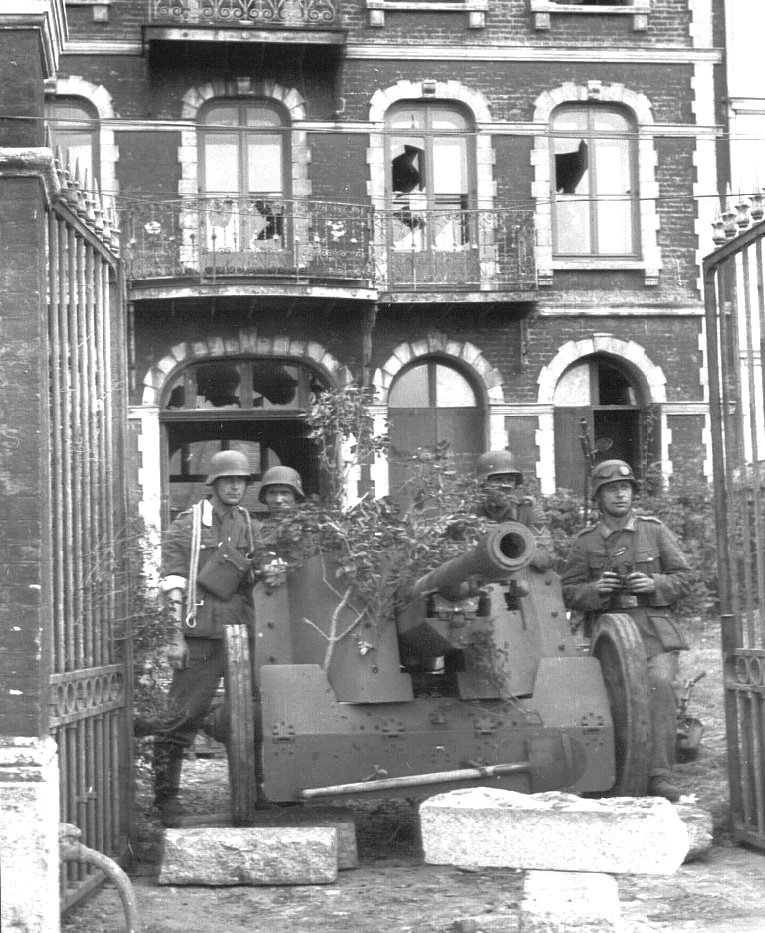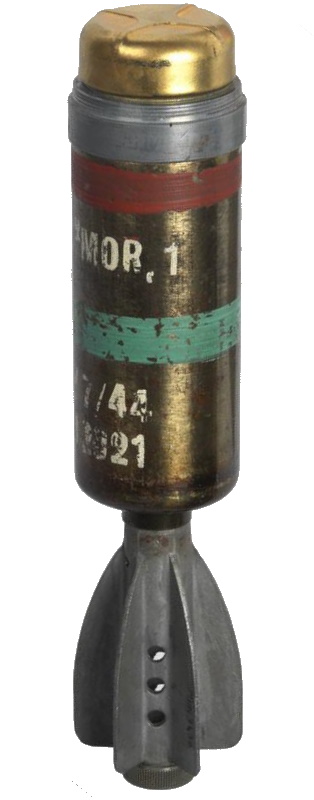The LCA, washed out by the waves from the shore, its engines out of commission, and its crew killed, drifted away from the beach in a sinking condition until a shell sank it. Supporting the Battalion was the HMS Garth. As FOO, I could not indicate targets to Garth because I could not get to a position where I could see any targets. When the destroyer can in close to carry out direct bombardment – she had to come in quite close to observe her own targets through the intermittent small smoke screen put up by the 2′ mortar – she was forced out by enemy shell-fire, and further discontinued her fire because her shells struck so close to own troops that they called her off. The Germans indubitably had casualties here on Blue Beach. Lt Archibald (RCA) saw their Aid Post above the beach at Puys full of German wounded. They were however by no means as numerous as our.
Observations
The following are a few opinions on the employment of Infantry and other Arms in an assault landing. They are the result of a week’s discussion with surviving Officers of the Royals and other Officers of the 2nd Canadian Infantry Division at Verneuil and are necessarily influenced by the particular conditions of Blue Beach. It is realized that the same conditions of ground and the peculiar advantage of the defense in this instance will not always obtain.
(a) Timing
If, as it appears, we were 45 minutes late in touching down (0535 instead of 0450) this certainly accounts for the extremely alert state of the Germans. By the same token, when a number of attacks are to be put in along a, say 25 kilometers stretch of coast, should they not be put simultaneously? This would give each individual attack a better chance of surprise. Further, is surprisingly easier to obtain, than the preparatory heavy air bombardment which in our case would quite probably have succeeded were surprised, or rather the hope of surprise, failed? The landing was made in growling daylight. They did not make for easy or swift penetration of the beach, having regard to the enemy defenses.
(b) Support
RAF: It is felt that, given that that the landing had not been delayed, preliminary low-level, or better, dive-bombing on the sea-wall and the fortified house would have put us through Puys faster and with fewer losses than any attempt to do so with the hope of complete surprise. In the case of dive-bombing, it cannot of course be used at night or at first light, for the simple reason that the pilot cannot see his target, but the experience of that 88-MM. Battery with low-level attacks should point to the ineffectiveness of such attacks. In the situation at Blue Beach, where at the time of the land, the RAF had complete fighter superiority, dive-bombers could have been used for the first hour of daylight with every chance of success, and a minimum of interference by enemy fighters. Only a dive-bomber, it is suggested, could have done immediate heavy damage to the sea wall, and the fortified house.
(c) Smoke
The use of smoke by sub-units needs more study, particularly as to when and where it should be used. Frequently, our own smoke obscured the situation for us as much as then it did for the enemy. When we wanted a screen badly, to screen the Ambulance LCA or the path up through the wire, there was not enough smoke to do the job. Theoretically, according to the establishment, there should have been enough, there must have been enough smoke generators, 3′ and 2′ mortar smoke bombs, and smoke grenades. However, it seems that many of the men who carried the principal amount of this smoke equipment were lost at the water’s edge, or later, were not at the positions where smoke was desperately needed. This may suggest a change in the nature of smoke producers.
As has already been said, the 3′ mortars never got into action, all the crews were shot down before they could get a single round away. The 3′ mortar crews did their best with gallantry, but the German snipers and Machine gunners were too quick. The 2′ mortars, some of which were clotted with water and wet chalk, were able only with difficulty to fire smoke grenades at reduced ranges. I do not know the reason for this 2′ mortar trouble.
(e) Bangalore Torpedoes
Whether a wider distribution of Bangalore torpedoes, made up of standard interchangeable sections of smaller length that one man could easily handle would have served the situation better, is worthy of consideration. As I remember, the torpedoes with the Royals were well over 6 feet long, so long in fact that they were carried on the gunwale of the LCA. In the LCA, these torpedoes improperly secured to the gunwale were lost overside shortly after leaving the mother ship. Shorter Bangalore torpedoes could have been carried inside the LCA in safety. Shorter lengths would have been easier to handle for a man leaping out of an LCA. Interlocking, interchangeable sections, if this is feasible, would permit a wider distribution of these aids against the barbed wires, which means putting more eggs in many more baskets. They might have saved us 20 to 30 minutes getting through the wire.
















